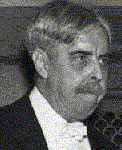Note: This site is moving to KnowledgeJump.com. Please reset your bookmark.
Edward L. Thorndike (1874-1949)
The intellect, character and skill possessed by any man are the product of certain original tendencies and the training which they have received. - Edward Thorndike
Edward Thorndike is one of the great learning theorists of all time. He believed that instruction should pursue specified, socially useful goals. In 1928 his classic study, Adult Learning, he posited that the ability to learn did not decline until age 35, and then it declined only 1 percent per year, thus going against the grain of the time that “you can't teach an old dog new tricks.” However, it was later shown that the speed of learning, not the power to learn, declined with age. Thorndike also formulated the law of effect, which states that behaviors that are followed by pleasant consequences will be more likely to be repeated in the future.
One of his most famous theories is “The Identical Elements Theory of the Transfer of Training” where the amount of transfer between the familiar situation and the unfamiliar one is determined by the number of elements that the two situations have in common. This opposed the long held view of “Formal Discipline” (mostly discredited now) in which the human mind is made up of several powers such as reasoning, attention, judgment, and memory that strengthen with practice. For example, the study of Latin and mathematics strengthen the reasoning and memory faculties. This is also known as the “Mental Muscle Approach” since it was claimed that the mind was made stronger with practice just as one would strengthen their biceps.
He was also one of the first pioneers of active learning in that he held low opinions of lectures. He once stated:
The lecture and demonstration methods represent an approach to a limiting extreme in which the teacher lets the student find out nothing which he could possible be told or shown. . . They ask of him only that he attend to, and do his best to understand, questions which he did not himself frame and answers which he did not himself work out.
Thorndike supported Dewey's functionalism and added a stimulus-response component and renamed it connectionist. His theory became an educational requirement for the next fifty years.
Thorndike specified three conditions that maximized learning:
- The law of effect stated that the likely recurrence of a response is generally governed by its consequence or effect generally in the form of reward or punishment.
- The law of recency stated that the most recent response is likely to govern the recurrence.
- The law of exercise stated that stimulus-response associations are strengthened through repetition.



